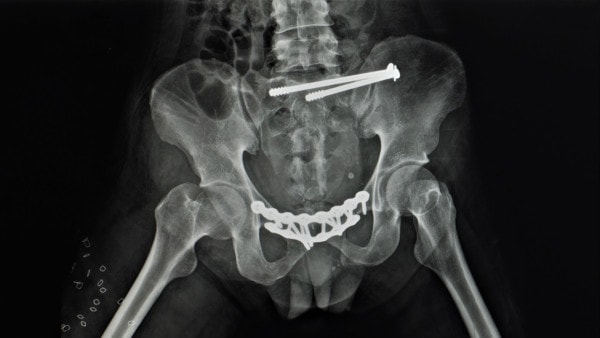When Minimally Invasive Meets Stupid

The results of a sacroiliac joint fixation. Yok_onepiece/Shutterstock
This will be a short one this morning focused on the famous quote that showed up in the first Jurassic Park movie. The idea that just because we can, doesn’t mean we should. Let’s dig in.
Could and Should
Medicine has evolved to the point where we can now do lots of stuff to lots of people. The problem is that just because it can be done, doesn’t mean it should be done. For example, I’ve pointed out that we can now fuse your SI joint solid with large screws using just x-ray guidance. In some ways, if we focus just on the technology, that’s a marvel. Someone took screws that were meant to be placed using open surgery and figured out a cool way to deploy them into the SI joint without using open surgery. However, then you get into the flip side of that tech. You’re destroying someone’s sacroiliac joint by placing screws through it to help their pain when there are lots of much better ways to treat that SI joint instability without destroying the joint. Again, just because we can do this doesn’t mean we should.
Here’s the Jurassic Park scene from above:
Knee Arthritis Embolization?
I’ve seen this one a few times now and every time it comes back up I’m like, why are we doing this to patients? This is yet another example of just because we can, should we? Meet embolization of the geniculate arteries.
In this procedure, presented at the recent virtual meeting of the Society of Interventional Radiology, the doctors cannulated the arteries around the knee (geniculate arteries) using a catheter (1). They then purposefully clotted them off and destroyed them. Without blood supply to pain receptors in the knee, the knee arthritis patients reported less pain.
However, by disrupting the blood supply to the knee, we are destroying parts of the knee joint. Meaning that this is a destructive procedure, just like radiofrequency ablation of the geniculate nerves. In fact, I would say that it’s more invasive than that procedure. Why destroy tissue when you can help by regenerating or helping the healing process?
The upshot? Just because we can destroy the geniculate arteries using a catheter, doesn’t mean we should. Tomorrow, I’ll dive deeper into the concept of one-way street destructive treatments versus treatments that try to improve tissue, so look for that one.
_____________________________________
References:
(1) Society of Interventional Radiology. Non-surgical treatment quickly reduces arthritis knee pain and improves function. https://www.sirweb.org/media-and-pubs/media/news-release-archive/sir-2021-knee-pain-031621/ Accessed April 7, 2021

If you have questions or comments about this blog post, please email us at [email protected]
NOTE: This blog post provides general information to help the reader better understand regenerative medicine, musculoskeletal health, and related subjects. All content provided in this blog, website, or any linked materials, including text, graphics, images, patient profiles, outcomes, and information, are not intended and should not be considered or used as a substitute for medical advice, diagnosis, or treatment. Please always consult with a professional and certified healthcare provider to discuss if a treatment is right for you.